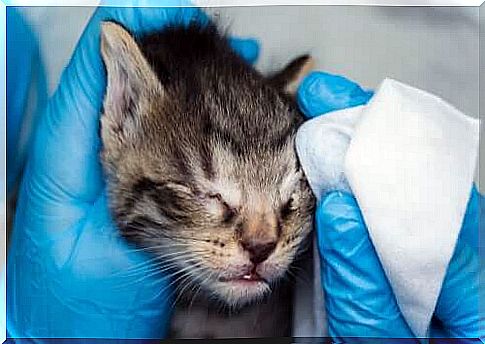How Do You Know Which Bacteria Are Making Your Dog Or Cat Sick?

Bacteria are microorganisms that can cause different diseases in different groups of animals. An example is domestic animals such as dogs and cats, which are the most common pets in households.
general symptomatology
Each of the diseases has its own specific symptoms. The set of symptoms allows the veterinarian to determine if the disease is caused by bacteria, fungi, viruses or others and thus establish a specific diagnosis.
However, it must be taken into account that generalized symptoms may occur that allow you to determine whether an infection is bacterial or not. Among them we can find:
- Behavior changes.
- Fever.
- Loss of appetite.
- Sneezing or runny nose.
- Urinary problems.
- Muscle tension.
- Eye problems.
- Loss of balance.
Consult a professional if you experience any of these symptoms, a combination of them or others, for a reasonable period of time. The veterinarian will tell you how to act and will take the symptoms into account when making the diagnosis.
Bacteria and the diseases they can cause
Of the different types of diseases that bacteria can cause, the following are mentioned:
- Pneumonia. It can be caused by Haemophilus influenzae, Bordatella bronchiseptica, or Streptococcus pyogenes.
- Intestinal tract. Escherichia coli stands out mainly, but S almonella sp. or Campylobacter sp.
- Urinary tract. Kidney problems can sometimes be caused by a bacterial infection. Among the different bacteria, E. coli or Staphylococcus aureus stand out.
- Skin infections. Pyoderma is a bacterial skin infection caused primarily by Staphylococcus pseudintermedius.
Both dogs and cats can carry different types of microorganisms or parasites. And, therefore, they can act as intermediaries in the transmission of diseases.
Bacterial Diseases in Cats
Cats can develop different types of bacterial diseases. This includes the following:
Conjunctivitis
Conjunctivitis is a disease that can be caused by infectious agents, whether due to bacteria such as Chlamydia sp . or Mycoplasma sp . or the canine herpes virus. It can also be a symptom of other pathologies.
This disease is more common in cats less than six months old that have not received proper care. However, it can also appear in adult cats when the immune system is weakened.

To differentiate whether the causative agent is a bacteria or a virus, there are clues that can help. It was found that the bacterial infections are usually unilateral and exudate is thick and whitish.
Herpes virus, on the other hand, causes a very contagious infection, which can be bilateral and occurs in more layers. The herpes virus will remain dormant and can cause outbreaks in stressed adult specimens.
Bacterial Diseases in Dogs
Dogs also develop illnesses caused by different types of bacteria. An example of the illness they can cause is:
Intestinal infection by Campylobacter sp .
Two species of bacteria, Campylobacter jejuni and Campylobacter ypsaliensis , are the cause of this intestinal infection in dogs. They can also cause infections in humans and cats or other animals.
The main symptoms are diarrhea, abdominal pain or cramps, lethargy and fever. To correctly diagnose the causative agent, a blood and stool test is performed in the laboratory.
These bacteria are resistant to a large number of antibiotics. For this reason, erythromycin is often used, although it depends on the dog’s condition. Antibiotics reduce the number of bacteria, which lowers the risk of infection.
Bacterial Infections in Dogs and Cats
Dogs and cats can suffer from illnesses caused by the same pathogen. An example of this is Escherichia coli , the bacterium that causes most urinary tract infections.
Urinary tract infection
In clinic, there are different symptoms. However, the most common signs of urinary tract infection are hematuria, pollakiuria, stranguria, and dysuria.
Another notable feature is inappropriate urination or incontinence. On the other hand, urine may have an unusual color and odor.
The symptoms, along with a blood and urine test, allow for a correct diagnosis. In some cases, other complementary tests are needed, such as ultrasound or endoscopy.
Tips to keep in mind
It is important to mention that a large percentage of existing bacteria are harmless. Only 1% of the total is responsible for different diseases whose infectious agent is bacteria.
In any case, in the event of symptoms that indicate that the dog or cat may be ill, it is advisable to take the animal to a veterinarian as soon as possible. Only the professional can decide which tests are needed to make a correct diagnosis.
Thus, he will prescribe the antibiotics or medication he deems appropriate and may suggest a series of preventive measures to be taken into consideration. You should always trust the expert in these cases.









